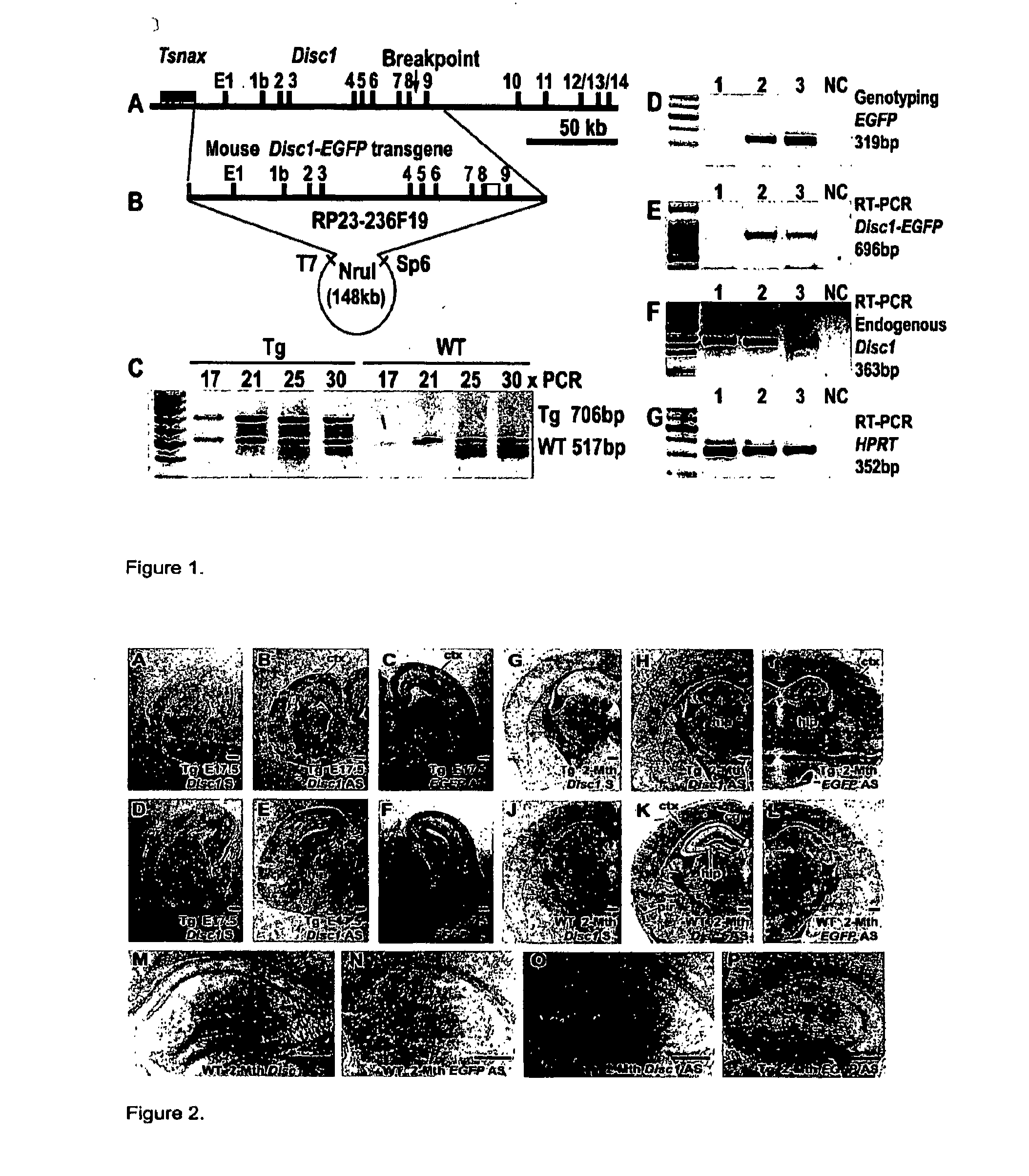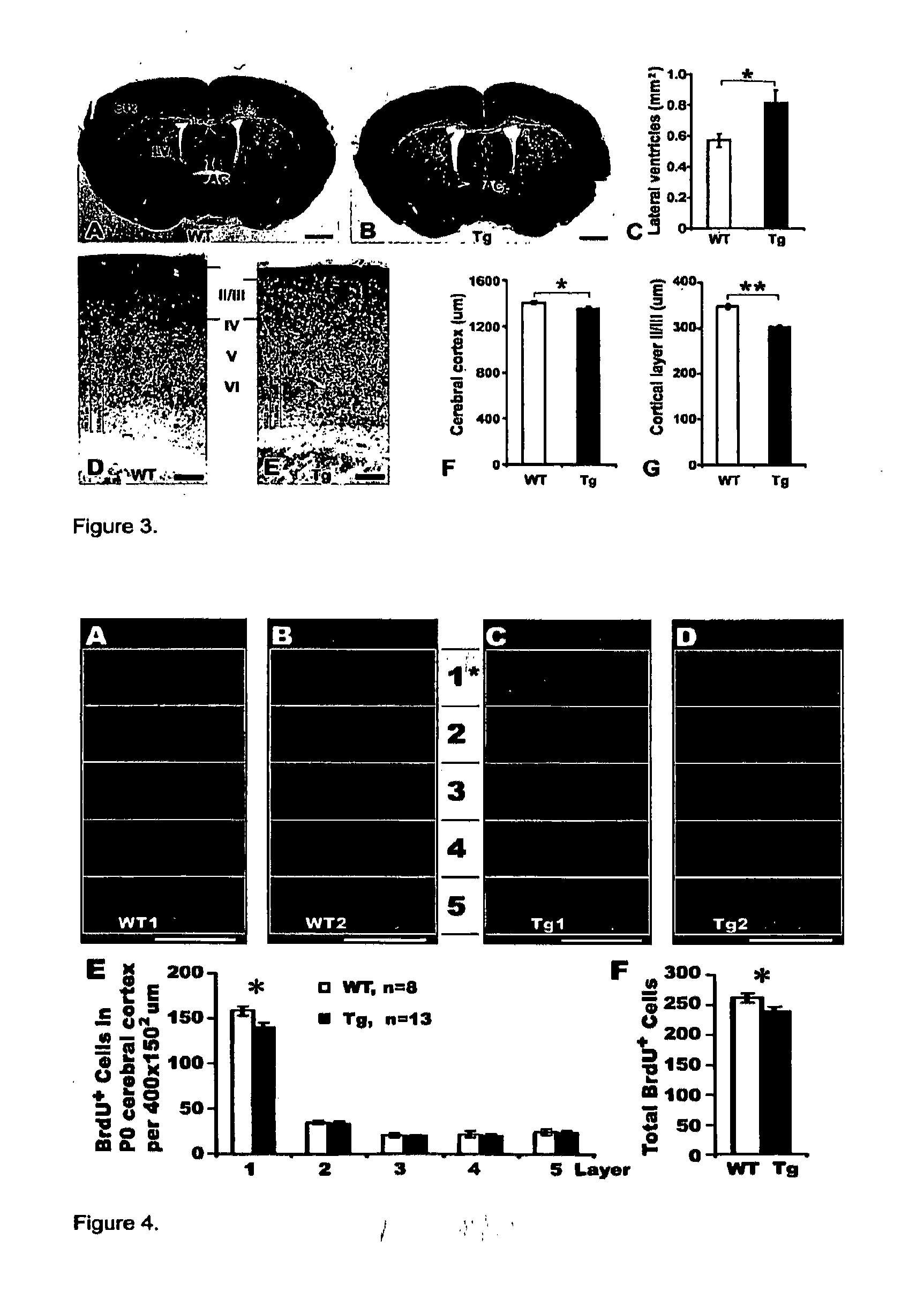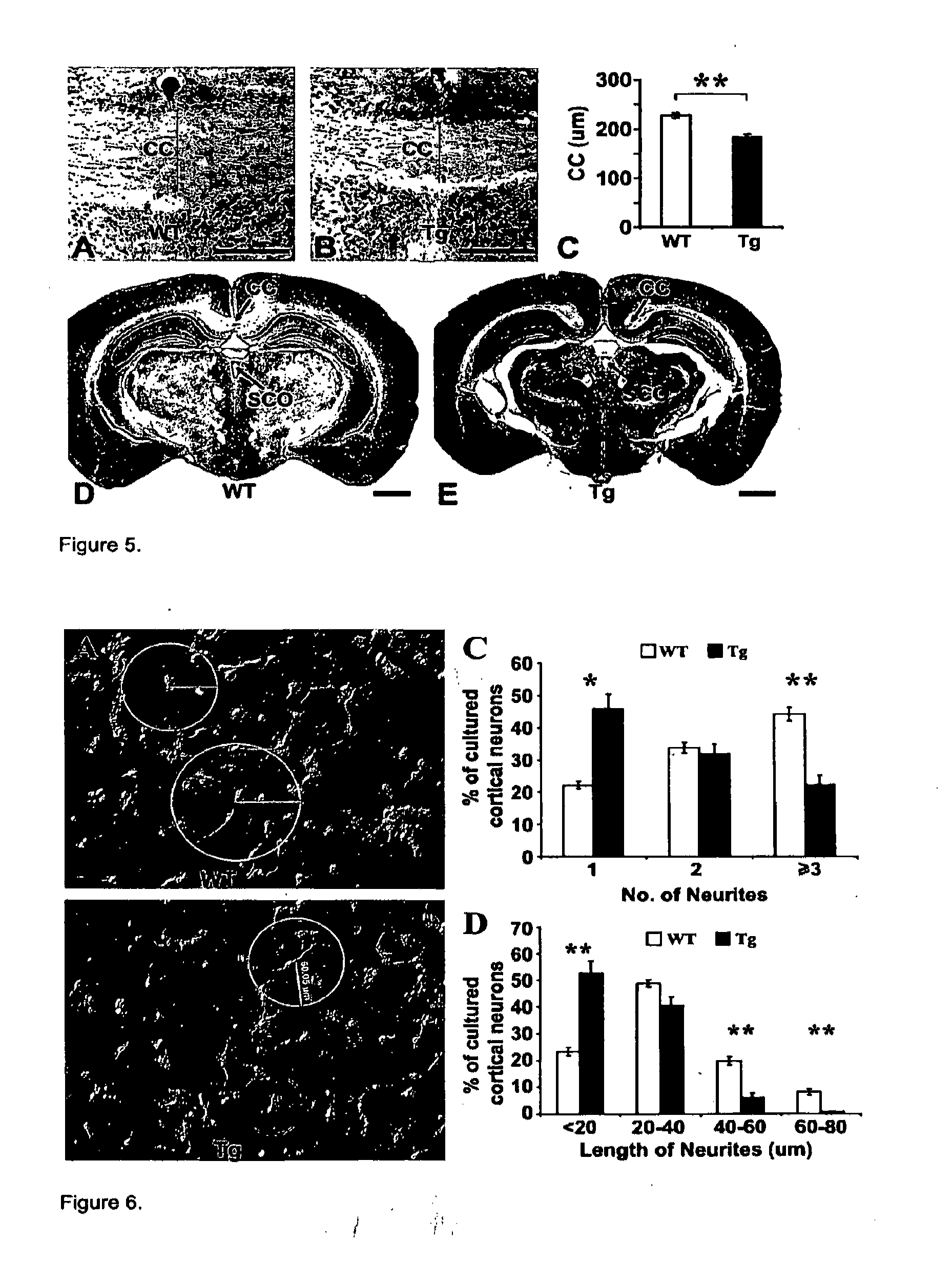Transgenic rodent expressing truncated disc1
a technology of truncated discs and transgenic rodents, which is applied in the field of transgenic rodents, can solve the problems of no objective tests, no convincing animal models, and the majority of the genetic risk remains unexplained, and achieves the effects of reducing parvalbumin immunoreactivity, increasing parvalbumin cells, and reducing parvalbumin cells
- Summary
- Abstract
- Description
- Claims
- Application Information
AI Technical Summary
Benefits of technology
Problems solved by technology
Method used
Image
Examples
example 1
Truncated Disc1tr EGFP Transgene and Expression
[0149]To genetically model the DISC1 truncation (FIG. 1A), we characterized a mouse BAC RP23-236F19 containing Disc1 exons 1-9 with its entire upstream sequences (FIG. 18). To facilitate the identification of the transgene, we fused an EGFP cDNA to the end of exon 8 followed by a SV40 polyA signal. The modified BAC DNA was microinjected into fertilized mouse eggs, and 3 Disc1trtransgenic founders (M19, M20 and M22) were generated that contained the EGFP fragment. Most studies were carried out on the M19 heterozygotes and WT littermate controls unless specified otherwise, as the M22 offspring did not express the transgene mRNA, and the M20 female founder failed to transmit the transgene with reduced litter sizes (6.3±0.7 mice / litter, n=6) in comparison to other breeding pairs (8.7±0.5 mice / litter, n=29 litters, p<0.01). The M19 transgenic heterozygotes contained 2 copies of the truncated Disc1 on the background of 2 copies of full length...
example 2
Dilated Lateral Ventricles and Reduced Cerebral Cortex in Disc1tr Transgenic Mice
[0151]Schizophrenic symptoms usually begin in late adolescence or early adulthood, and neuroanatomic changes in lateral ventricles and cerebral cortex are seen in schizophrenic patients. We analyzed neuroanatomy in sexually mature, 2-month old transgenic mice. Mouse brains were processed histologically from 11 Disc1tr transgenics (6 male and 5 female) and 15 WT littermates (8 male and 7 female). Sections were imaged at the plane where the anterior commissure crossed the midline (FIG. 3A-B). Sizes of the cerebral cortex and corpus callosum were quantified. The transgenic lateral ventricles were found to be dilated by ˜44% (p<0.05) (FIG. 3C). In addition, we have detected a subtle (˜4%) but significant (p<0.05) reduction in the thickness of the dorso-lateral frontal cortex (FIG. 3D-F) of transgenic mice. Remarkably, this reduction largely resulted from the thinning of cortical layers which was reduced by ...
example 3
Reduced Neuronal Proliferation in the Developing Transgenic Brain
[0152]In the mouse, cortical neurogenesis starts from E10.5 and is largely completed by E17.5. Cells in the ventricular zone of the dorsolateral telencephalon undergo a maximum of 11 cell divisions, and neurones at different layers are generated in a cell cycle number-dependent manner (Estivill-Torrus et al., 2002). To explore the cellular mechanisms causing thinned layers II / III in Disc1tr transgenic mice, we carried out birth dating experiments during mid-neurogenesis.
[0153]A pulse of BrdU was injected into pregnant females at E15.5, when layer II / III neurons were formed. Four independent litters of newborn brains were processed with anti-BrdU antibody. BrdU-positive cells were quantified from equally divided areas (400 μm wide×150 μm height) of newborn cortex of 13 transgenic heterozygotes and 8 WT littermates at the lateral ventrical level (FIG. 4A-D).
[0154]Transgenic newborns showed a modest but significant reduct...
PUM
| Property | Measurement | Unit |
|---|---|---|
| height | aaaaa | aaaaa |
| length | aaaaa | aaaaa |
| height | aaaaa | aaaaa |
Abstract
Description
Claims
Application Information
 Login to View More
Login to View More - R&D
- Intellectual Property
- Life Sciences
- Materials
- Tech Scout
- Unparalleled Data Quality
- Higher Quality Content
- 60% Fewer Hallucinations
Browse by: Latest US Patents, China's latest patents, Technical Efficacy Thesaurus, Application Domain, Technology Topic, Popular Technical Reports.
© 2025 PatSnap. All rights reserved.Legal|Privacy policy|Modern Slavery Act Transparency Statement|Sitemap|About US| Contact US: help@patsnap.com



